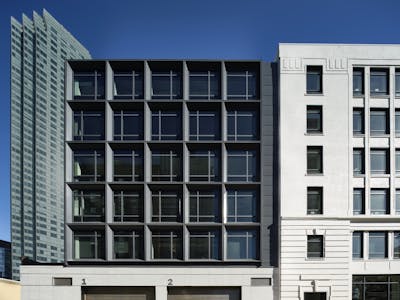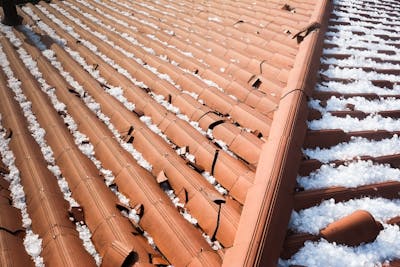This article by Amaris Beza, PE, Diagnostics Group, was originally published on LinkedIn.
Overview
A plethora of building material choices are available to architects to help make their building designs stand out. Stone copings at top of parapet walls can be a visually stunning architectural feature for new buildings, but from a waterproofing perspective, they may cause some concerns for building enclosure consultants.
Stone copings are typically secured to the parapet framing with a dowel, which must penetrate through the waterproofing layers installed below the stone. While specifying that the dowel must be sealed to the waterproofing membrane with sealant, this can be difficult to get exactly right during installation. To help create some redundancy in the building enclosure system at top of parapets, we recommend including a metal through-wall flashing below stone copings that span from end to end, with notches carefully located to accommodate for dowels.

Specifying the right material to fill joints between stone copings can also be a challenge. Even waterproofing consultants have differing opinions on whether the best material to use is mortar, polyurethane sealant, silicone sealant, or lead tees. While lead tees may be a good option for restoration of historic buildings which require maintaining the stone aesthetic, they can be expensive and may require additional consideration for safe handling. Mortar joints may be prone to cracking. Polyurethane sealant is an inexpensive, tear-resistant material, but can be prone to greater degradation from ultraviolet (UV) exposure. Silicone sealants hold up well to UV exposure and have excellent movement capability, but can potentially stain the adjacent stone. These joints will be sky-facing, so any defect or distress in the joint material is highly susceptible to allowing water penetration into the building interior. Consideration of expected thermal movement, regional temperatures, priority for aesthetics, and other project-specific factors can help educate the decision for the right joint material.

To avoid many of these pitfalls, we recommend that the design team thoughtfully consider how to clearly specify effective waterproofing measures for stone copings on parapet walls within the design documents. During construction, these components must also be carefully inspected to prevent missteps in installation which could ultimately lead to water intrusion.
Walter P Moore provides expert building enclosure third-party review services and building enclosure commissioning services for Owners, Architects, and General Contractors to assist the design and build teams in delivering not just a completed building, but a watertight building in the long-term. No one likes a leaky building!



